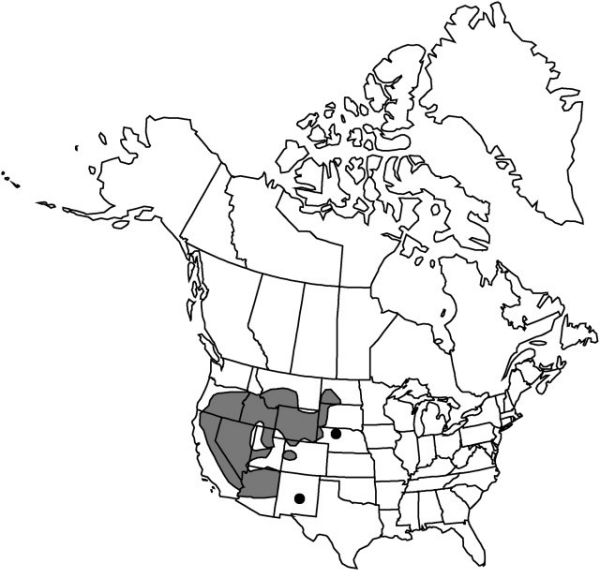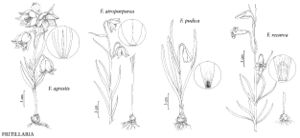Fritillaria atropurpurea
J. Acad. Nat. Sci. Philadelphia 7: 54. 1834.
Bulb scales: large 2–5; small 45–50. Stem 1–6 dm. Leaves in whorls of 2–3 leaves per node proximally, 4–12 cm, usually shorter than inflorescence; blade linear to lanceolate; distal leaves usually slightly less than or equaling proximalmost leaf. Flowers nodding; perianth widely open; tepals purplish brown, clearly mottled yellow or white, oblong to ± diamond-shaped, 1–2.5 cm, margins flat to revolute, apex not recurved; nectaries obscure, covering most of tepals, yellow with dark reddish dots, elliptic; style obviously branched for more than 1/2 its length; branches longer than 1.5 mm. Capsules acutely angled.
Phenology: Flowering May–Jul.
Habitat: Leaf mold under trees and shrubs
Elevation: 1000–3200 m.
Distribution

Ariz., Calif., Colo., Idaho, Mont., Nebr., Nev., N.Mex., N.Dak., Oreg., S.Dak., Utah, Wyo.
Discussion
This species has the widest geographic distribution in the genus. It is easily confused with Fritillaria pinetorum as there is no one consistent, distinguishing trait. These two species are most easily identified in the field, but herbarium specimens can be successfully identified using a combination of flower posture and cauline leaf traits. In F. pinetorum the flowers are almost always erect, although some of the flowers may be ± spreading. In F. atropurpurea the flowers are nodding, with some flowers sometimes ± spreading. The habit of the flowers can be easily confused in pressed specimens, so careful attention to cauline leaf traits works best for them. Fritillaria pinetorum has long proximalmost cauline leaves that surpass the inflorescence, whereas the proximalmost cauline leaves in F. atropurpurea almost never exceed the inflorescence. For accurate identifications, it is best to look at several individuals from a location.
The Lakota tribe used the whole plant of this species as a cancer cure. Plants were pulverized into a salve and applied to scrofulous swellings.
Selected References
None.
